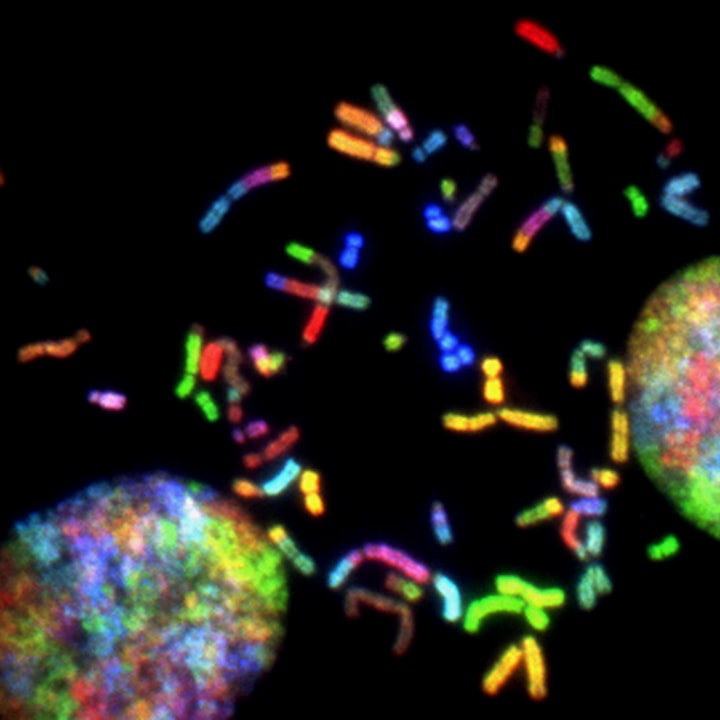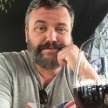Blowing My Own Horn, Part Three
The Stale Miracle

Blowing My Own Horn 3:
The Stale Miracle
“Dennis Rosso had really, really fucked things up. Death had just been minding its own business. And now he had killed it.”
The Stale Miracle is the story of Dennis Rosso, an obscure biologist viewed as a crackpot by most, who one day “discovers” the secret to eternal human life.
The next eighty years are an unprecedented rollercoaster of exploration, revolution, pandemic, war, and cultural change. Like most good science fiction, The Stale Miracle is not really a book about the future it is set in, but rather a book about the age it was written in.
Genesis: From Joke to Epiphany
“84 years ago, humanity discovered a miracle. Has the miracle gone stale?”
First came the title.
I seem to recall I was shooting the shit with some friends when I settled on the topic of unusual band names. You know, like “Neutral Milk Hotel,” or “Death From Above 1975.” I threw out “The Stale Miracle” due to its inherent contrast. We don’t usually think of miracles as going stale, like bread or relationships. I thought it was a laugh, and that was all.
But a few days later, in the shower, I got thinking about The Stale Miracle. I wondered what a good example of a miracle going stale over time might be. And then, I considered the Holy Grail of human engineering: life extension. What if we figured out how to prolong our lives indefinitely? What would the consequences be?
This led to a much longer shower than usual. And a novel that seeks to explore these questions. In the end, The Stale Miracle is not really about eternal life, but about a world on the verge of the next stage in its evolution. A world in which wonders comingle with horrors. Our world.
“The news from Earth got steadily worse. One month after the first report, the Red Foam was everywhere. Except China.”
I wrote the novel on the eve of COVID-19, and in the middle of “Climate Emergency” hysteria. My students were asking me in all seriousness if the world really was going to end in twelve years. I felt that we were edging towards a tipping point of madness, while at the same time rovers roamed Mars and people made music videos in orbit. The dichotomy between great accomplishments and terrible predicaments is at the heart of the book.
“’If you hurry, you may be able to witness it.’ Dennis shook his head, his mouth suddenly dry. ‘Witness what?’ Gandalf gave him an unnerving smile. ‘Why, a suicide, of course.’”
Probably the greatest outside influence on the novel besides current events was the novella by Robert Heinlein, The Door Into Summer. Heinlein’s very un-PC tale of borderline pedophilia and opportunistic time-travel hinted at an imperfect future in which the heroic inventor stands exposed as a greedy cad who would’ve fit right in with the Roman Emperors and the 19th Century robber barons. In short, man changes the world, without changing himself.
Putting the “Science” in Sci-Fi
“JC Bryson Foods had taken over the entire southern part of Smyrna, in the north-west suburbs of Atlanta. It was a megafactory, a thoroughly modern enterprise into which nothing but sacksful of nutrient, small shipments of cell culture, and a handful of workers entered each day. What exited was tons of manufactured, cloned, and designed food.”
Unlike Heinlein’s antihero, Dennis Rosso does not avail himself of reverse time-travel or cryogenic suspension to await his girlfriend turning legal (yuck). He does, however, solve the riddle of life extension and travel to Mars. He exists in a world of magnetic levitation trains, tailored germ warfare, cloned meat, and broadcast suicide. This required the application of some acquired scientific knowledge, and its extrapolation one-hundred years into the future.
I started with the basis for Dennis’ fame and fortune: life extension. Like most Sci-Fi, which is written by non-scientists like me, the secret is to sound authoritative while remaining deliberately vague.
“It was pig muscle with one genetic sequence suppressed. He could see it in his head, like he imagined Mozart could see music. That genetic sequence could only be one thing. The kill switch. The thing that makes mammals die.”
I know that biologists have been enquiring into whether or not mammalian cells have a “kill switch” built into their DNA; an inherent limiting factor in human lifespan. I’ve read their theorizing that suppressing the kill switch could be the secret to extending human life.
I also know that animal tissue has been grown in the lab in order to provide meat without killing animals. I postulated a link between the two that becomes significant in the story.
Finally, on the biological front, I’ve read about the potential for bioengineered pathogens which target certain ethnic groups; “gain of function” work to enhance the virulence and lethality of natural origins; and other bad, bad ideas.
Given that “gain of function” work in China may turn out to be the source of our current difficulties, I’ll credit myself with a tiny bit of prescience here.
“Porton Down concludes, with 95% probability, that Red Foam is a genetically engineered bioweapon, incorporating ethnic DNA tailoring for maximum kill ratio in selected groups, and minimal in the origin group. That origin group being Han Chinese, we therefore conclude that this bioweapon is a product of the People’s Republic of China.”
Over the course of Dennis Rosso’s suddenly infinite life, he realizes his boyhood dreams by traveling not only to Mars, but to the Moon as well. The science here is less speculative. We know we can do it. How we pay for it has been the question for decades. The solution in the novel appears to be the solution we’re settling on in reality: we’re getting the tech billionaires to pay for it. The terraforming that Merlin Duplessis (guess who he’s based on) undertakes on Mars moves at perhaps a faster pace than most scientists would agree with, but since it all depends on how much water we find on Mars, it’s still pretty much anyone’s guess.
“’You’re level at three-zero. Approaching datum point.’ Now, all they could see on all sides were the walls of the great basin. Stacks and layers of geologic time punched through by the great bolide. It would’ve been claustrophobic; but Dennis understood how massive the Hellas Basin was. Leuprecht could’ve flown aerobatics with room to spare.”
Much of the rest of the rest of the technology is simply an extrapolation of current trends. Man/machine interface weapons, fusion power, and robotics all feature in the novel. But some technologies have come further than others.
“Dennis sighed. A living creature would take the hint that he was trying to get past. But the glowing-mouthed idiobot would not be deterred.”
For the inclusion of advanced technologies and their relevance to the story, I suppose you could call The Stale Miracle “Hard Sci-Fi.” But my concern is really more about how that technology impacts society and people, than with the innovations themselves.
Be Careful What You Wish For: Post-Miracle Humanity
“Lucy walked over. She was young-looking (she could’ve been a hundred) with black curls, wide hips, and dark brown eyes. In the past, his good lucks and his money would’ve been quite the entrée. But now, Dennis reflected ruefully, everyone was hot. And lots of people were rich too.”
Post-Miracle society looks very different on the surface, but some of the same problems remain, in different form. In 2117, limitless fusion power and efficient use of resources have minimized environmental degradation. Humans now have a presence on seven worlds and are about to settle the first interstellar colony. The consumption of living animal flesh is prohibited by law. Gender transitions are as routine as organ transplants. The human population has still not fully recovered from the twin effects of the plague and war of 2045, and the widespread use of mandatory birth control. This has lessened the human impact on the environment still further.
The old divides between races, classes, and legal vs illegal immigrants have been replaced by a new divide: “Normies” are people with the Miracle, the genetic treatments which render death from anything save fire, radiation, acid, or pulverization impossible, and the matching “Inhibitor,” a reversible birth control, may live and work wherever they wish. They can also receive a guaranteed minimum income, which people like Lucy choose to supplant with work income, in order to afford luxuries like offworld travel. The “Uncontrolled” are those without the Miracle/Inhibitor combo, who exist much like today’s illegal immigrants, living in working in Normie areas under threat of deportation. Many areas in which the Uncontrolled live are still scarred by “The Exchange,” the nuclear war following the revelation that China started the Red Foam.
Many of the Uncontrolled have chosen not to receive the miracle for religious or philosophical reasons. Others simply cannot afford it. A black market in unapproved genetic treatments has arisen.
“’They don’t want anyone outside Normie areas to have the Miracle. Even though we promise to do it the approved DCC way, right? With sterilization, okay? All about control, right?’ Dennis nodded. His carefully tended creation had become the anchor of what Stephen called ‘the new caste system.’”
National divisions persist, although the 2045 war was the last major conflict on Earth. The Martian Republic, led by Merlin Duplessis, has been supplanted by a UN client state. Other colonies are pushing for the independence once enjoyed by the Martians. China has been devastated and defeated following the Red Foam.
The Miracle, and the widespread use of cloned tissue both for meat and organ transplant may be having unforeseen effects. Dennis comes to suspect that an uptick in suicides may be the result of engineered DNA on humans.
The reaction of the authorities is curiously passive. A subculture of broadcast and corporate-sponsored suicides is tolerated.
“’Oh God, they’re holding hands!’ Latoya embraced him. Dennis remembered a snapshot from his childhood, two office workers plummeting from the World Trade Center on 9/11, holding hands. There was a sudden rush of incandescent, pastel light. The two Christians were framed in outline for a second. Then they were gone.”
The Miracle has had other effects. Few children are now born, authorized by lottery to replace the victims of accidents and homicides. The under-21 age cohort is vanishingly small in Normie areas.
“Etienne spoke, finally. ‘What a crazy-assed world to be born in.’ ‘Your parents won the lottery?’ Lynn asked. ‘Yeah.’ He sipped at a purloined beer. ‘I go to school with ten other kids. The same ten kids since kindergarten, except for one who moved away. You know what it’s like to be a kid today. Nobody to hang out with, nobody gets your problems, ‘cause when you talk, they’re all like ‘The Red Foam, blah blah blah.’”
One other unanticipated effect of the Miracle is the permanence of regret. People can live several lives’ worth over centuries. With added experiences, comes added negative emotions, some of which are undiluted by time. Dennis finds this particularly painful when it comes to his decades-long relationship with his second wife.
Life in a Day: Fitting Eighty-Four Years of History Into 388 Pages
“’You have proven yourself to be a great soldier, Dr Kassabian. Now, you show yourself to be a great diplomat.’ General Lapriese flattered him. ‘Oh.’ Henrik Kassabian smiled enigmatically. ‘I am a great many things.’”
A story about eternal life could easily become, well…eternal. After all, Dennis moves from a remote cove in Chile, to a lab in Detroit, to Mars, the Moon, and back, finally returning to Earth and a cross-country journey to discover what has become of his Miracle.
He starts out as a scientist, becomes a rich and famous businessman, a colonist, a disease detective, and a warrior. Finally, he becomes the very man he struggled to destroy.
The last book I wrote that was this ambitious, Slowly, The World Burns, While I Help to Fan the Flames came in at 602 pages. I wanted this one to be a little more…manageable. I used the same past/present structure of alternating chapters to tell the story, but a little more briskly.
In the end, I came out satisfied that I succeeded in telling a story of our present world and it’s crazy-train aspects, set in a plausible near-future. I’ll let the readers decide if I’m right.
About the Creator
Grant Patterson
Grant is a retired law enforcement officer and native of Vancouver, BC. He has also lived in Brazil. He has written fifteen books.






Comments
There are no comments for this story
Be the first to respond and start the conversation.